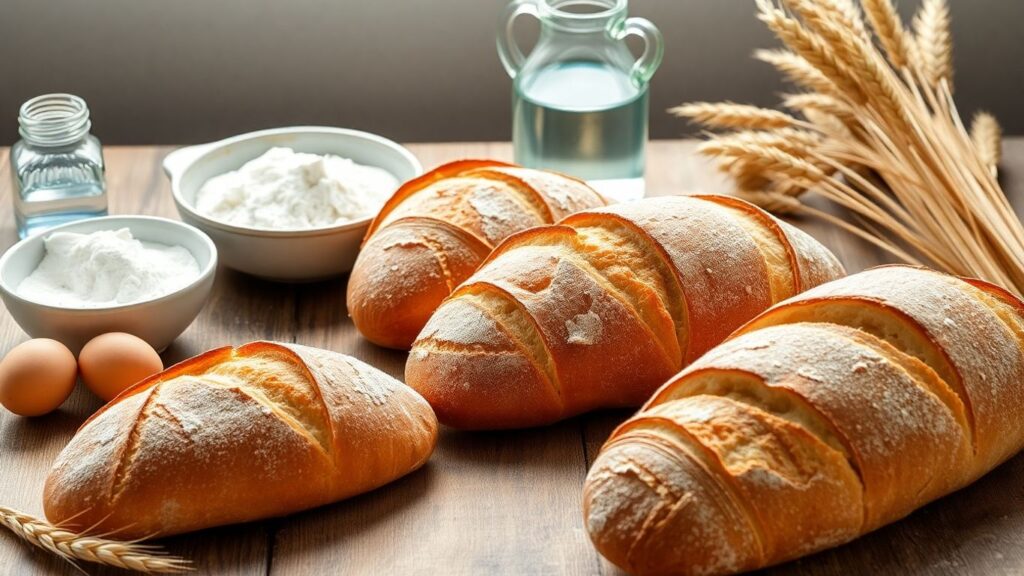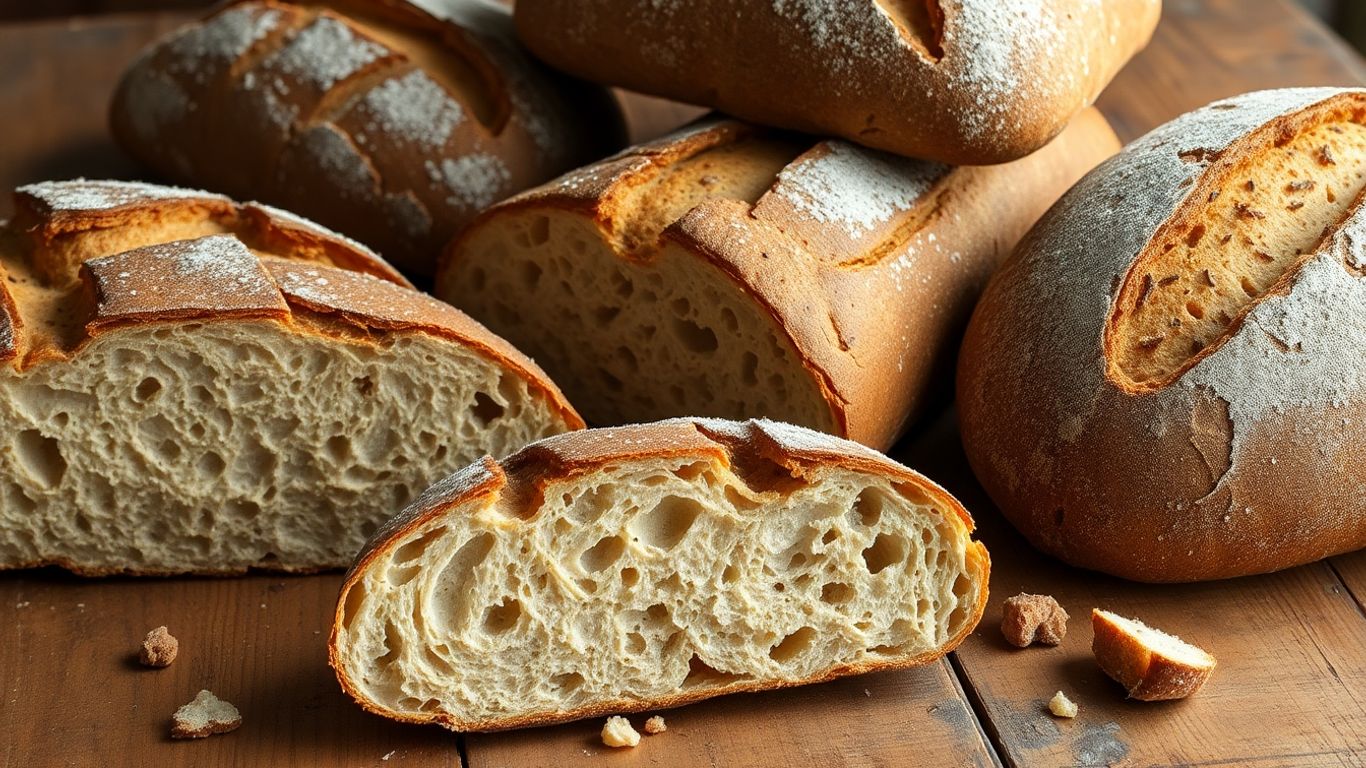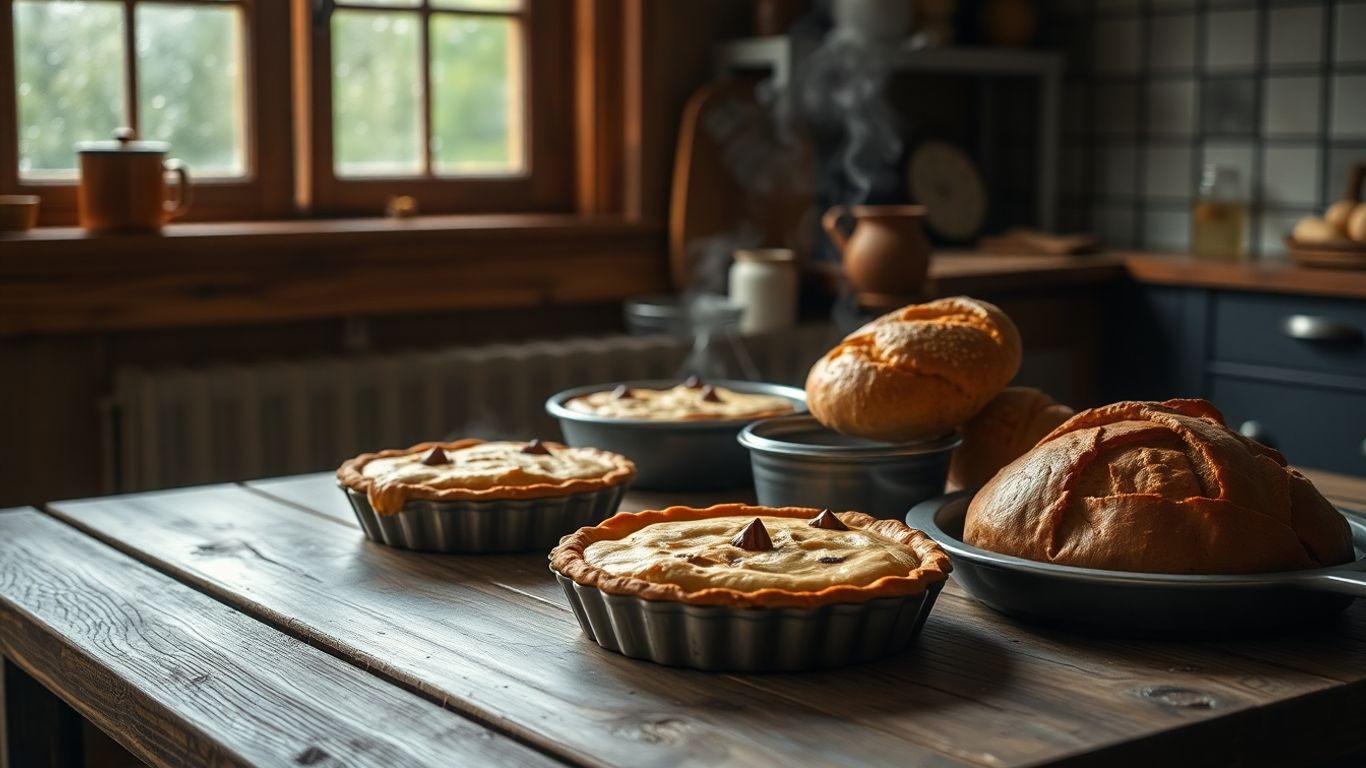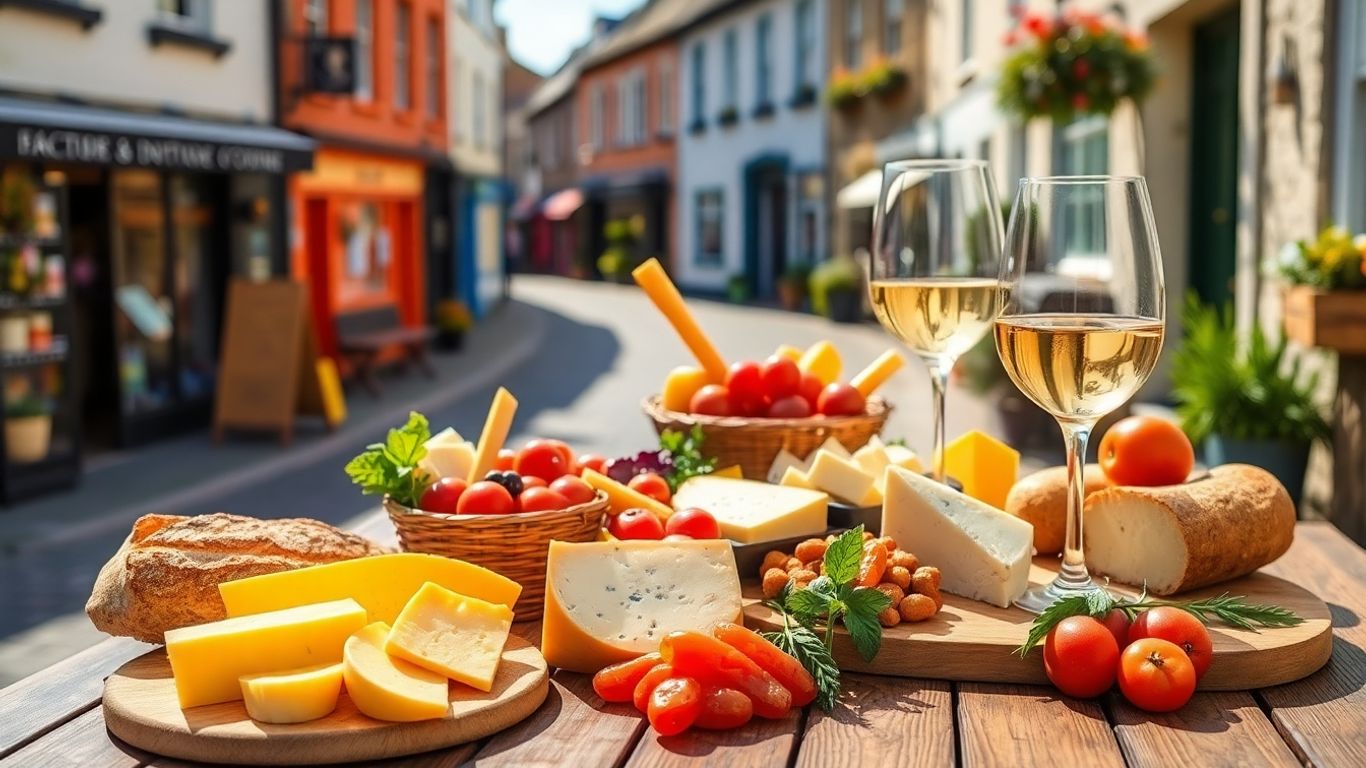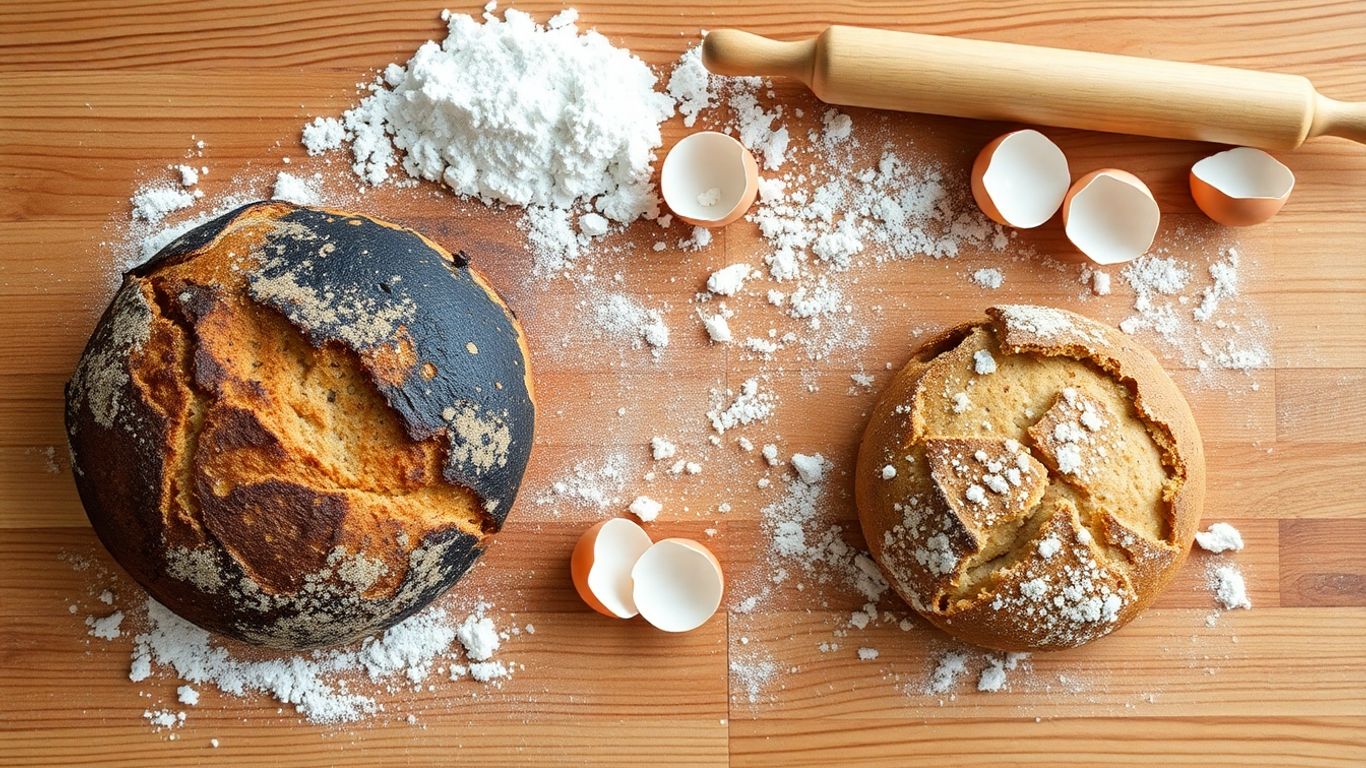Ever looked at the price tag on a loaf of artisan bread and wondered if it’s really worth it? You’re not alone. Most of us are used to grabbing cheap bread from the supermarket, but when you see a fancy loaf for £5 or more, it makes you stop and think. There’s a lot more going on behind that price than just flour and water. Let’s dig into what really affects bread pricing and why those quality ingredients matter so much.
Key Takeaways
- Artisan bread costs more because it uses better ingredients and takes much more time and effort to make.
- The kind of flour and other ingredients used in bread have a big impact on both the price and the taste.
- We’re used to cheap bread, but when you compare it to other foods, maybe it’s time we rethink how we value a good loaf.
What Drives the Price of Artisan Bread?

If you’ve ever stood in front of an artisan bakery’s counter and squinted at the prices, you’re not alone. People often wonder why a proper loaf made by a real person costs several times what they’d pay in a supermarket. Well, there’s a bit more going on behind the scenes than just flour and water. Here’s what’s really pushing those prices up.
Labour and Craftsmanship in Artisan Baking
Artisan bread isn’t churned out on conveyor belts. Most loaves take two days to make, start to finish. The bakers put in the hours: mixing, folding, waiting, shaping, and baking.
Some reasons artisanal baking is so demanding:
- Slow fermentation – sometimes overnight, even up to 48 hours.
- Shaping by hand, each loaf getting real attention.
- Working with high-hydration doughs that behave like a cross between batter and dough—definitely not beginner-friendly.
Honestly, the hands-on work and skill make every loaf a mini project. You’re not just buying bread, you’re buying someone’s time, early mornings, and a blizzard of flour in their hair.
Most bakers making this bread get up at silly o’clock, all so you can have a loaf that actually tastes of something. That’s got to count for something.
The Role of Quality Ingredients in Bread Pricing
Now, let’s talk ingredients. Artisan bakers pick the best they can afford. We’re talking fresh, stoneground flour from small mills, not the stuff sold by the lorry load. There’s generally:
- Higher prices for unbleached, organic grains
- Paying local farmers a fair rate
- No cheating with cheap, chemical dough "improvers"
Here’s a quick comparison of costs for a basic 1kg loaf:
| Ingredient Type | Average Cost per Loaf |
|---|---|
| Supermarket White | £0.30 |
| Artisan–Standard | £0.80 |
| Artisan–Organic/Local | £1.15 |
That’s just the flour! When you factor in good sea salt, filtered water, and any extras (seeds, grains), the bill creeps up. But you taste the difference in the flavour — and even in how well it keeps over several days.
So the next time you see that artisan loaf asking for £4 or £5, remember: you’re tasting real work and real ingredients, not just paying for a fancy label.
How Ingredient Choices Impact Bread Pricing
When it comes to why some bread makes your wallet wince while others barely leave a scratch, it’s not just about the baking method or branding — the real difference is what goes into the dough.
Artisan Ingredients vs. Industrial Additives
Artisan bread bakers get pretty fussy about sourcing. They’re often hunting for freshly-milled, locally-grown flour, sea salt, filtered water, maybe even single-origin olive oil or heritage grains. There are no random additives or E-numbers – just real stuff you’d recognise from your own pantry.
Industrial bread, by contrast, tends to be packed with:
- Dough conditioners (to speed up production)
- Preservatives and anti-mould agents
- Low-cost, bulk flour
- Enzymes or improvers for longer shelf life
The problem is, all these extras make bread cheaper to mass-produce, but you lose out on taste, nutrition, and the uniqueness that real, simple ingredients bring.
Artisan loaves tend to use just a handful of quality ingredients, which usually means better flavour, a longer-lasting loaf, and simply, a nicer eating experience.
Flour Quality and Its Effect on Cost
If you know any artisan bakers, you’ve probably heard them talk about flour like it’s wine — origin, protein content, freshness, all of that. Using freshly-milled grains or organic flour costs more than big-brand commodity stuff.
Let’s compare some average prices (approximate and per kilogram):
| Flour Type | Typical Industrial Price | Artisan/Organic Price |
|---|---|---|
| Standard White (mass market) | £0.40 | £1.00+ |
| Stoneground Wholemeal | £0.60 | £1.80+ |
| Local/Specialty/Heritage | £1.00 | £2.00–£3.50 |
So, what does all that mean?
- Better flour pushes up the ingredient bill, but brings top-notch taste and texture.
- Sustainable, local flour supports small farms and keeps more money in the local economy.
- Pre-mixed industrial flour blends help factories slash production costs, but at the cost of flavour and individuality.
Even just the flour choice can double or triple the ingredient costs for an artisan loaf. And when that’s paired with things like wild sourdough starter (instead of yeast from a packet) and real salt or honey, it’s not surprising that true artisan bread commands a higher price.
Making good bread really isn’t cheap — especially when you care about what’s not in it.
Bread Pricing, Value, and the Perception of Bread

When you think of bread, you probably picture something basic, something you grab at the shop for a couple of quid, maybe £2 or £3 at most. There’s a reason for that. For ages, we’ve been taught that bread should be cheap. Doesn’t matter if it’s a sad supermarket loaf or a lovely, crusty handmade one – lots of folks expect to pay the bare minimum.
Why We Expect Bread to Be Cheap
The idea that bread needs to be cheap is hardwired into most of us. It’s a staple, after all, and staples aren’t supposed to cost much. Supermarkets line the shelves with loaves "on sale" every week, propping up the myth that bread just isn’t worth much. But is that actually fair, especially when you look at the effort and the real ingredients artisan bakers put in? Probably not. Still, if a fancy coffee can set you back £3.50 for a quick treat, why do we get cross about a £4 loaf that took days to craft?
- Bread is seen as a right, not a luxury.
- Processed industrial bread keeps prices and expectations low.
- The true cost of cheap bread is hidden – in farming, health, and the environment.
Bread should nourish us, not race to the bottom. If we want real bread, we have to be okay with a price that keeps good bakers in business.
Comparing Bread to Other Staple Goods
Let’s line bread up against other everyday staples. It’s wild how our heads work when it comes to value. You’ll see people shell out for a posh handcrafted croissant or sourdough from a bakery and then hesitate at the price of an artisan loaf. Next time you’re in a café, count how many people walk out with a £4 coffee without a second thought. But bread? That’s different, apparently.
Here’s a quick comparison of average prices for a treat or staple in the UK (2025):
| Product | Average Price | Amount | How Long It Lasts |
|---|---|---|---|
| White Sandwich Bread (Supermarket) | £1 | 800g loaf | 2-3 days |
| Artisan Sourdough Loaf | £4.50 | 900g loaf | 5-7 days |
| Latte (Café) | £3.80 | 1 serving | 10 min |
| Bottle of Wine | £8 | 750ml | 1-2 meals |
People don’t blink at these prices for coffee or wine, but bread gets judged more harshly – even though it’s likely to offer more meals per pound spent.
- Wine, coffee and beer are framed as indulgences or social luxuries.
- Bread is seen as basic, even though it takes real work and care to make well.
- Maybe it’s time we looked at bread not just as something cheap to fill us up, but as a food worth paying for.
Bread prices can change, but good bread is always worth it. It’s not just about how much you pay – it’s about the taste and the feeling you get from every bite. Want to find out more about tasty, fresh bread and what makes it a great choice? Visit our website today to see what we bake!
Wrapping It Up: Paying for Real Bread
So, after all this talk about flour, fermentation, and what goes into a proper loaf, here’s where I land: good bread just isn’t cheap, and honestly, it shouldn’t be. When you pick up a loaf from a local bakery, you’re not just buying bread—you’re supporting someone who’s put in real time, effort, and care. The ingredients are better, the process is slower, and the taste is on another level. Sure, supermarket bread is easy on the wallet, but you can taste the difference, and your body probably feels it too. Next time you’re eyeing that crusty sourdough with the higher price tag, remember what’s behind it. Sometimes, paying a bit more means you’re getting something real—and that’s worth it in my book.
Frequently Asked Questions
Why is artisan bread more expensive than supermarket bread?
Artisan bread costs more because it takes a lot more work and better ingredients to make. Bakers spend hours, sometimes even days, making each loaf by hand. They use high-quality flour and natural ingredients, not cheap fillers or preservatives. This means you get bread that tastes better and is healthier, but it also means the price is higher because more time and care go into every loaf.
What makes the ingredients in artisan bread special?
The ingredients in artisan bread are simple but top-notch. Most artisan bakers use just flour, water, salt, and yeast or natural sourdough. They look for the best flour, sometimes from local mills, and often choose organic or whole grain options. These ingredients give the bread a unique flavour and texture you can’t get from mass-produced loaves. Plus, there are no weird chemicals or additives, so it’s better for you.
Is artisan bread really worth the price?
If you care about taste, health, and supporting local bakers, then yes, artisan bread is worth it. You’re paying for real food made by skilled people, not just something pumped out by a machine. It’s like the difference between a handmade pizza and a frozen one from the store. Artisan bread might cost more, but you’re getting quality, freshness, and a loaf that was made with care.

